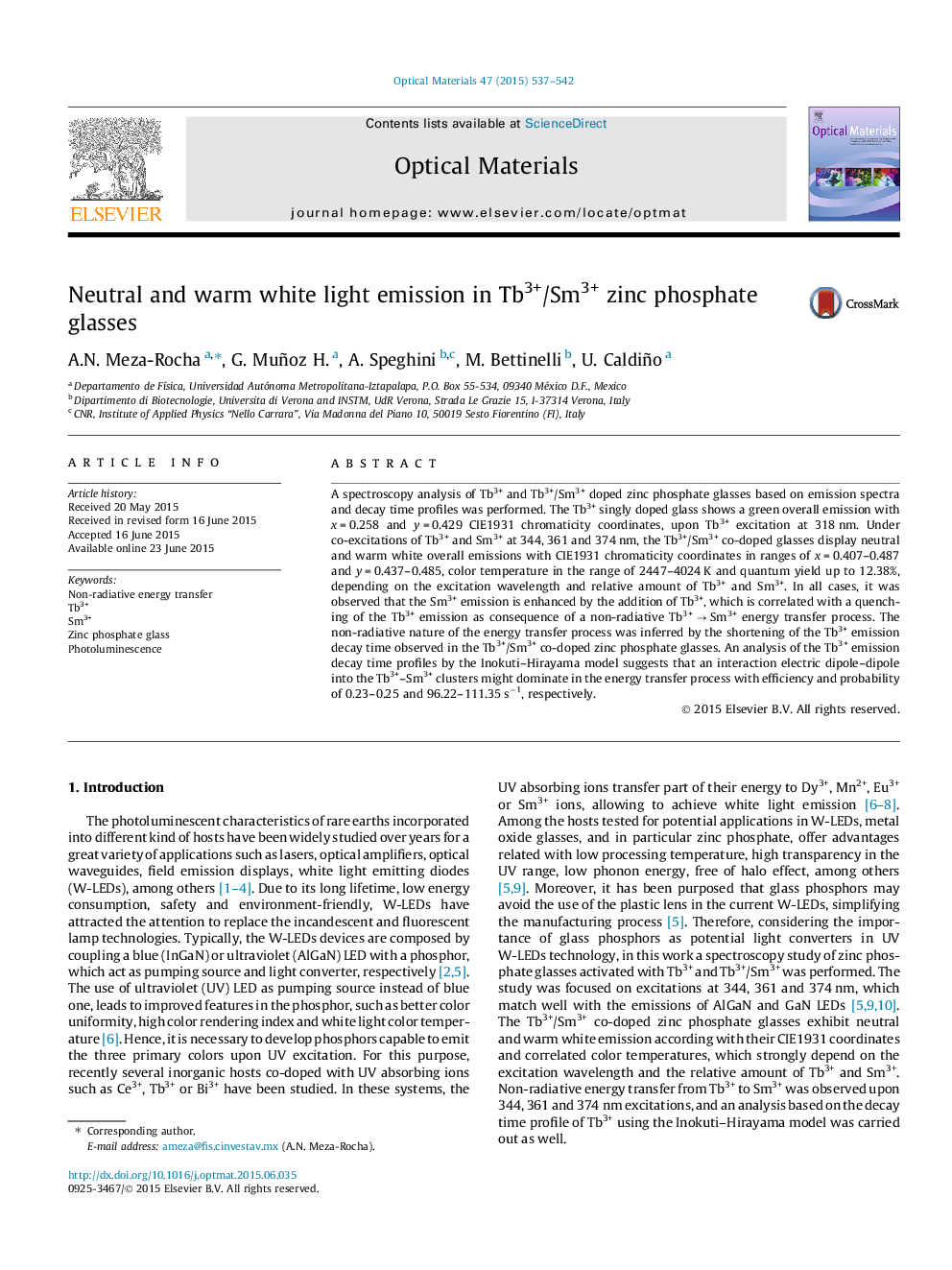| Article ID | Journal | Published Year | Pages | File Type |
|---|---|---|---|---|
| 1493752 | Optical Materials | 2015 | 6 Pages |
•Zn(PO3)2 are optically activated with Tb3+ and Tb3+/Sm3+.•Non-radiative energy transfer Tb3+ to Sm3+ occurs in the codoped phosphors.•Overall emission can be modulated with dopant content and excitation wavelength.•Codoped glasses might be useful as neutral or warm white phosphors.
A spectroscopy analysis of Tb3+ and Tb3+/Sm3+ doped zinc phosphate glasses based on emission spectra and decay time profiles was performed. The Tb3+ singly doped glass shows a green overall emission with x = 0.258 and y = 0.429 CIE1931 chromaticity coordinates, upon Tb3+ excitation at 318 nm. Under co-excitations of Tb3+ and Sm3+ at 344, 361 and 374 nm, the Tb3+/Sm3+ co-doped glasses display neutral and warm white overall emissions with CIE1931 chromaticity coordinates in ranges of x = 0.407–0.487 and y = 0.437–0.485, color temperature in the range of 2447–4024 K and quantum yield up to 12.38%, depending on the excitation wavelength and relative amount of Tb3+ and Sm3+. In all cases, it was observed that the Sm3+ emission is enhanced by the addition of Tb3+, which is correlated with a quenching of the Tb3+ emission as consequence of a non-radiative Tb3+ → Sm3+ energy transfer process. The non-radiative nature of the energy transfer process was inferred by the shortening of the Tb3+ emission decay time observed in the Tb3+/Sm3+ co-doped zinc phosphate glasses. An analysis of the Tb3+ emission decay time profiles by the Inokuti–Hirayama model suggests that an interaction electric dipole–dipole into the Tb3+–Sm3+ clusters might dominate in the energy transfer process with efficiency and probability of 0.23–0.25 and 96.22–111.35 s−1, respectively.
